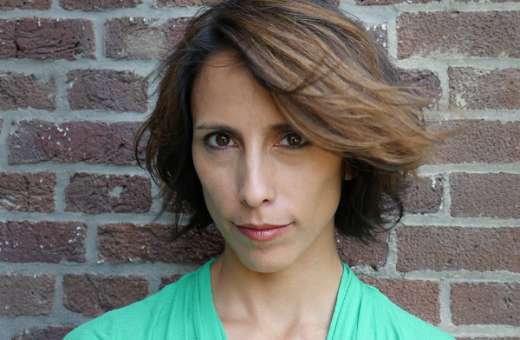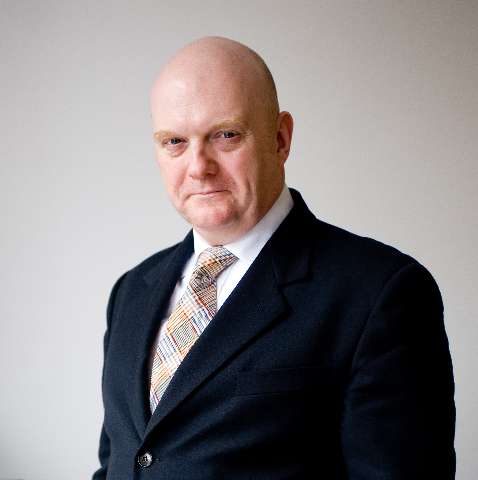For however long it lasts, aficionados of dance will look back on the coronavirus lockdown as a barren landscape for their art with the barest glimmer of a silver lining in the growth of new work made digitally and in accordance with the requirements of social distancing. No choreographer has done more to extend their repertoire during lockdown than Amsterdam-based Annabelle Lopez Ochoa. By the beginning of December, she was about to premiere her eleventh new filmed work using Zoom, and another two have been made digitally to be performed on stage.

It all began with a special request. Back in 2006, Lopez Ochoa had choreographed a work for Francois Rousseau and Julie Gardette to perform at the Fall for Dance Festival in New York. By the summer of 2020, Rousseau’s retirement from Norwegian National Ballet was already official and – after a 20-year career and three children – Gardette (his wife) was also in the throes of leaving. With no opportunity to say goodbye on stage, the couple asked Lopez Ochoa to make another duet for them. “I was sceptical,” she told me when we spoke (also by Zoom). “What can you do on Zoom – how can it be choreography? I saw everybody doing classes with that internet lag where you hear the music two counts after the movement.”
But friendship has its price and she agreed to try something. It was not easy, especially with three young children around. “We made the work (entitled Where do the Birds Go?) in six night-time rehearsals with me in Amsterdam and the dancers at home in Oslo.” This experiment brought a realisation that she had to edit the film personally. “I realised straightaway that the editing gave ME the feel of choreography –I was telling the stories and it was up to me to decide where and how to look at the dance.”
Lopez Ochoa also quickly realised that she needed to create choreography that could only work on film, not just show something that could also be seen in a theatre. She started to think differently about the product and brought in a cameraman friend, Peer Wijlaarts, to act as her mentor. “Building up a story on Zoom felt like being in the studio with the dancers – you try things out and struggle with musicality but gradually things become clearer. And when the films go online, it’s like a premiere. The dancers’ excitement is much greater than just taking class and so it has become something that I want to keep doing until we have our stages back.”
Next came two projects for other companies: a film entitled When one door closes for students at the first-ever Virtual Contemporary Ballet Programme at Jacobs’ Pillow, created from the tasks that were part of their coursework; and then Pajarillo Escondido for Noche Unidos, the celebration of Ballet Hispanico’s 50th anniversary.
The second Zoom choreography under Lopez Ochoa’s direct control was Avec le temps, a more expansive film made in and around her home city of Amsterdam, for DNB dancers Rémy Catalan and Jingjing Mao. It brought its own problems! “The choreography in their living room was difficult because their long limbs were knocking everything over!” Lopez Ochoa sourced another apartment from a friend but she had to wait for the right weather conditions for the external shots: “I wanted clouds but also for it to be warm and so we waited almost four weeks for the right conditions and had just three hours to rehearse and film. There was also a dog on the beach that wouldn’t leave us alone!”
The next Zoom choreography started out with the intention of being her first same-gender duet. Two male couples passed on the idea before she arranged for Anthony and Dylan Santos (Dance Theatre of Harlem) to work with her on Say their Names, a scenario inspired by George Floyd’s murder and the Black Lives Matter movement.
Lopez Ochoa has developed specific rules for her Zoom choreographies. “They are not my movies,” she told me. “Everybody does it for free and there is no leader. We all have to agree with the result.” She stresses that making these films is not work. “We don’t meet every day but every two or three days and we can always cancel at any time; another rule is that you have to try to find the best camera that you can, otherwise the film will be grainy and it will ruin the aesthetic.” Another issue without compromise is the film’s duration. “Anything longer than 4 minutes won’t work on social media,” she asserts. In all her Zoom choreographies to date, Lopez Ochoa has tended to work with couples because she is looking for the human contact that has been missing during the pandemic.
The Chicken and the Egg was made on a couple from Tulsa Ballet with a premise that began with a table, two chairs and a glass of water. “I needed another object and asked if they had an egg, which then led to the idea of a chicken.” It just so happened that the dancers’ knew someone who owned poultry and so a plump white hen became the star of the film.
Lopez Ochoa has taken more control of the filming process over time. “I have learnt that you need to translate choreography to the medium of film and that might mean a lot of cuts; or no cuts at all, or to play with colour graduations or superimposing; or you might decide on a split screen. You need to get a lot of movement out of a restricted and intimate set of circumstances and I’m still learning about all the possibilities.”
Ironically, not long before the pandemic, Lopez Ochoa turned down an approach to make her first dance film. “I have rarely liked any dance on film. It seemed to me to be only part of the real experience and I have never liked the director deciding what I should see.”
Her Zoom choreographies started as a digital diary about the age of coronavirus but this personal archive turned into a challenge. “For me, it has been about learning a new language, which is dance on film. It is not the same as creating dance for the stage.” She doesn’t know if she will continue when normality returns. “It is difficult to monetise. I don’t have a company – I’m nobody’s resident choreographer and I’m just here in my little studio. I have made works by Zoom in 2020 because all the other work is gone. ” Nonetheless it seems to have opened up new doors for this most prolific of choreographers and has already led to receiving approaches to make films professionally.
Since we spoke, Lopez Ochoa has continued to make more films by Zoom: It was all a dream for Joffrey Ballet; Tunnel for two dancers at Ballet Hispanico; Grassville for Whim W’Him; and Orlando’s Book, a cute film about motherhood for Viviana Durante and her son, Orlando. Her eleventh film, not yet released, is for the Cuban Flamenco star, Irene Rodriguez. In addition, Lopez Ochoa has made two works by Zoom for performance on stage: Chaloupée for Finnish National Ballet; and Limoncello for Tulsa Ballet. In the best of times, Lopez Ochoa has always been a hard-working choreographer, travelling the globe to stage new work; 2020 has been no different, bringing at least fourteen new works although the vast majority has been created without leaving home!


